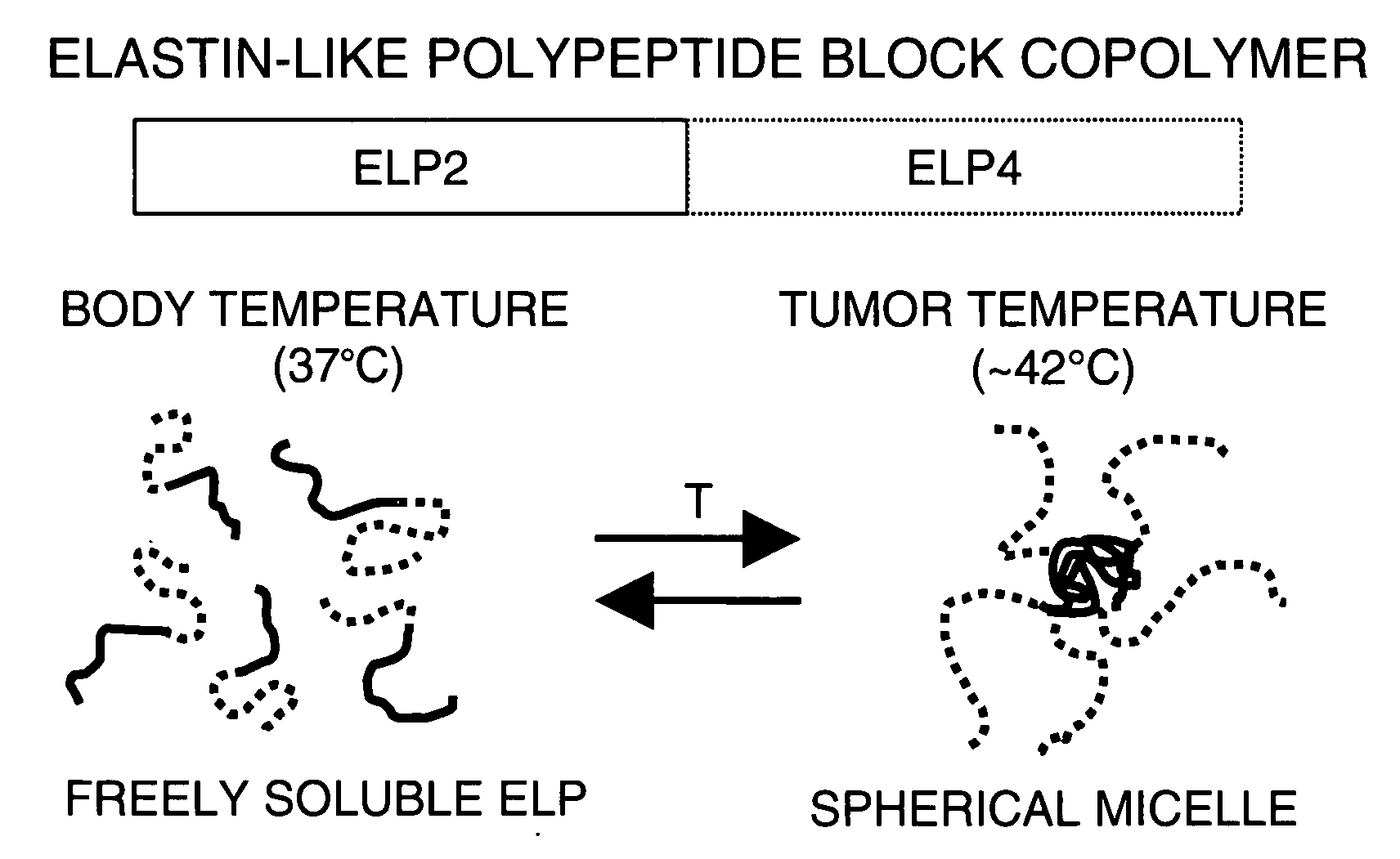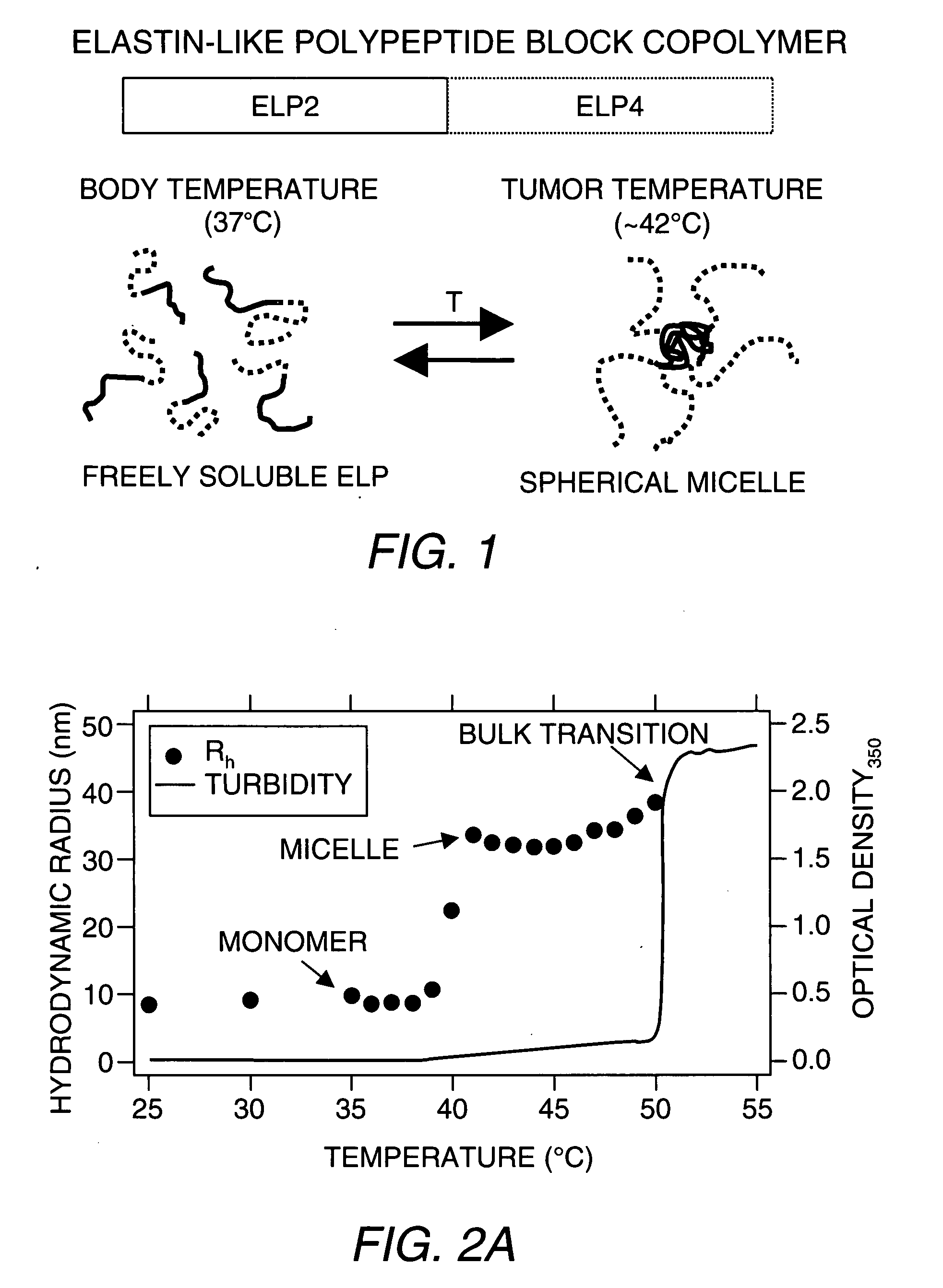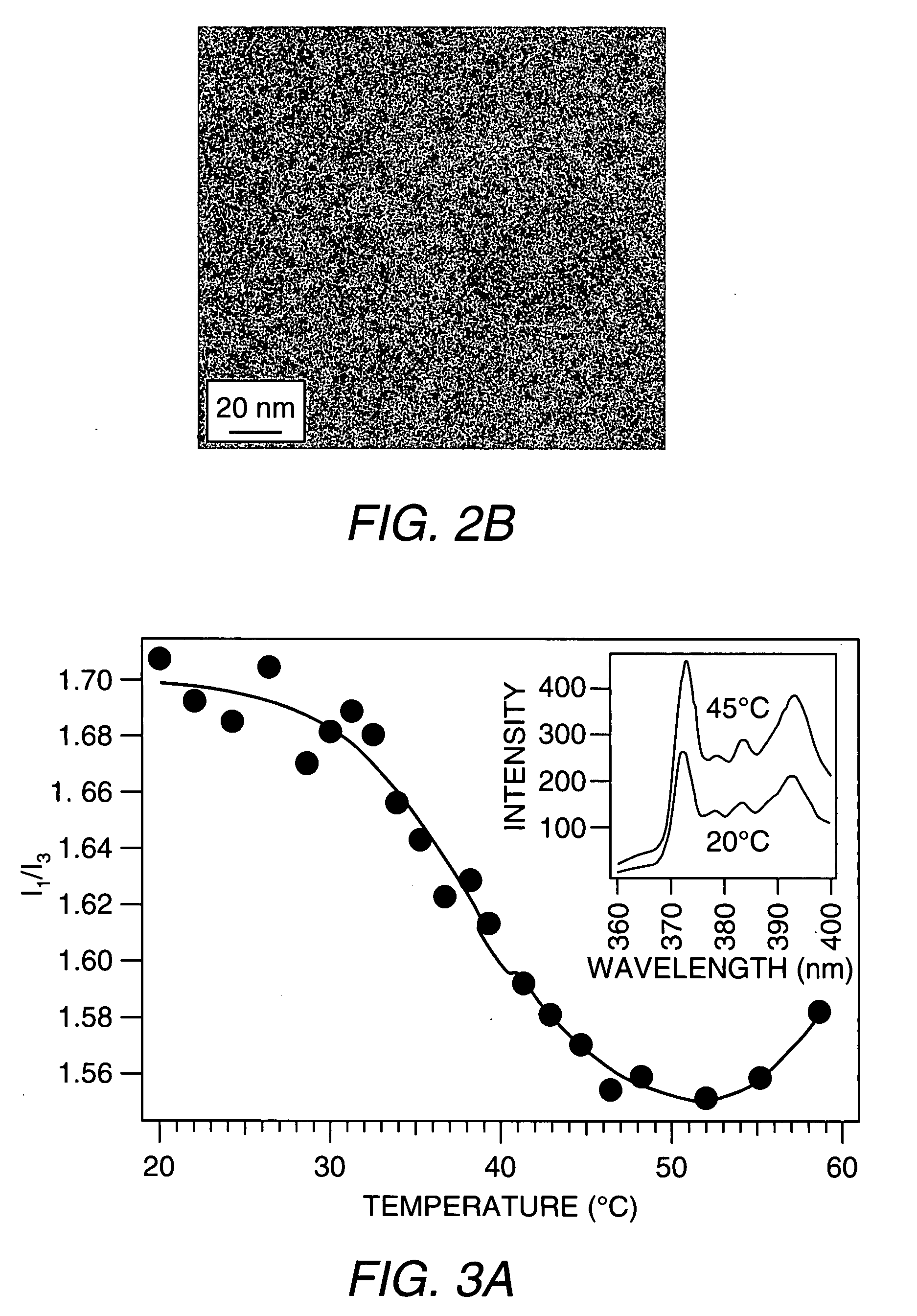Drug delivery with stimulus responsive biopolymers
- Summary
- Abstract
- Description
- Claims
- Application Information
AI Technical Summary
Benefits of technology
Problems solved by technology
Method used
Image
Examples
example 1
Construction of ELP-BCs
[0089]ELP-BCs were constructed as shown in FIG. 1 by seamlessly fusing two ELP genes together with different guest residue (i.e., Xaa) compositions such that the N-terminal gene had high Tt, termed ELP2 (Tt>90° C.), and the other gene at the C-terminus, called ELP4, had a lower Tt (Tt˜40° C.). The ELP-BC was highly soluble at temperatures below the Tt of both ELP blocks. At intermediate temperatures between the Tt of ELP4 and ELP2, the ELP-BC self-assembled into spherical micelles when the size and ratio of the blocks were selected correctly. The notation for the ELP-BCs consisted of the ELP gene followed by the number of pentapeptides. For example, ELP2-96,4-60 was an ELP-BC with 96 pentapeptides of an ELP2 gene at the N-terminus followed by 60 pentapeptides of ELP4 at the C-terminus. The ELP2-96,4-60 had an approximate hydrophilic (ELP2) to hydrophobic (ELP4) ratio of 3:2.
example 2
ELP Drug Delivery Schemes and Applications
[0090]ELP-BC Micelle. As shown in FIG. 2, the ELP-BCs formed spherical micelles when heated to the appropriate temperature. In this example, the drug can be covalently linked or complexed with the core of the micelle. The corona of the micelle may or may not contain ligands to actively target a body site.
[0091]ELP-BC Stimuli-Induced Drug Release. The ELP-BC micelle can also be used to release drugs based on an internal or external stimuli such as heat as shown in FIG. 3A. The ratio of pyrene's I1 and I3 vibrational peaks was proportional to the polarity of pyrene's environment. As the ELP-BC formed a micelle the ratio decreased (T=20 to 48° C.) as pyrene partitioned into the hydrophobic core. This also demonstrates how drugs can be encapsulated into the core of the micelle. Upon the second phase transition at 50° C. the ratio increased, indicative of release of pyrene from the core of the micelle. These data also demonstrate the release of d...
example 3
Analysis of ELP-BC Micelle Affinity Modulation
[0101]In preliminary studies, experiments were conducted to demonstrate the feasibility of the affinity modulation approach. In order for ELP-BCs to effectively modulate affinity for tumor-associated targets, three characteristics were sought; 1) ELP-BCs form spherical micelles in response to an increase in temperature, 2) the micelle formation temperature and size can be controlled and rationally designed a priori, and 3) the phase transition of the ELP can be triggered in vivo. The following describes the results which demonstrate that these requirements were effectively met.
[0102]ELP-BCs Form Spherical Micelles. Ten different ELP-BCs were constructed with various molecular weights and hydrophilic to hydrophobic ratios (i.e., ratio of ELP2 to ELP4), of which six out of the 10 formed spherical micelles when heated to intermediate temperatures between the Tt of both ELP blocks. It was empirically determined that the ratio of hydrophilic ...
PUM
| Property | Measurement | Unit |
|---|---|---|
| Temperature | aaaaa | aaaaa |
| Temperature | aaaaa | aaaaa |
| Temperature | aaaaa | aaaaa |
Abstract
Description
Claims
Application Information
 Login to View More
Login to View More - R&D
- Intellectual Property
- Life Sciences
- Materials
- Tech Scout
- Unparalleled Data Quality
- Higher Quality Content
- 60% Fewer Hallucinations
Browse by: Latest US Patents, China's latest patents, Technical Efficacy Thesaurus, Application Domain, Technology Topic, Popular Technical Reports.
© 2025 PatSnap. All rights reserved.Legal|Privacy policy|Modern Slavery Act Transparency Statement|Sitemap|About US| Contact US: help@patsnap.com



